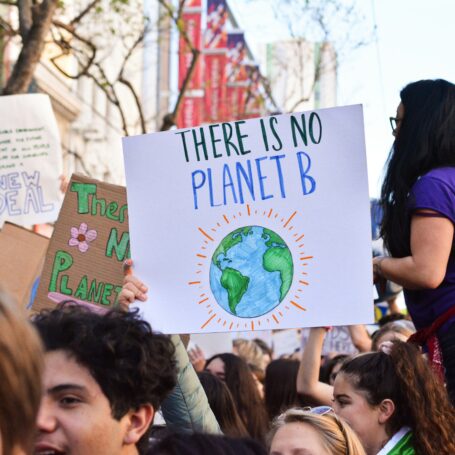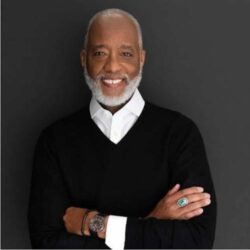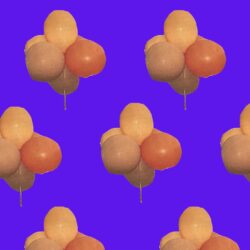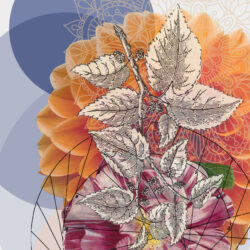Meet Dinglebat, P. Brain and Nutter: The Academics in Kid’s Picture Books
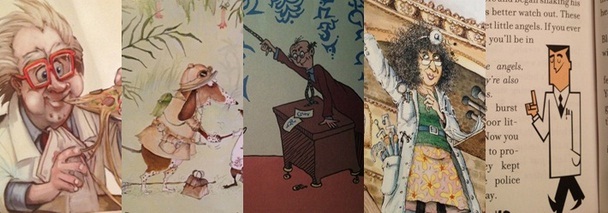 Like many academics, I love books. Like many book-loving parents, I’m keen to share that love with my young children. Two years ago, I chanced upon two different professors in children’s books, in quick succession. Wouldn’t it be a fun project, I thought, to see how academics, and universities, appear in children’s illustrated books? This would function both as an excuse to buy more books (we do live in a golden age of second hand books, cheaply delivered to your front door) and to explain to my kids – now five and a half, and twins of three – what Mummy Actually Does.
Like many academics, I love books. Like many book-loving parents, I’m keen to share that love with my young children. Two years ago, I chanced upon two different professors in children’s books, in quick succession. Wouldn’t it be a fun project, I thought, to see how academics, and universities, appear in children’s illustrated books? This would function both as an excuse to buy more books (we do live in a golden age of second hand books, cheaply delivered to your front door) and to explain to my kids – now five and a half, and twins of three – what Mummy Actually Does.

This piece was taken from Melissa Terras’ Blog where it appeared under the title “Male, Mad and Muddleheaded: Academics in Children’s Picture Books” and appears here with her permission.
It turns out it’s hard to search just for children’s books, and picture books, in library catalogs, but I combed through various electronic library resources, as well as Amazon, eBay, LibraryThing, and Abe, to dig up source material. I began to obsessively search the bookshelves of kids books in friend’s houses, and doctors and dentist and hospital waiting rooms, whilst also keeping on the look out on our regular visits to our local library: often academics appear in books without being named in the title, so don’t turn up easily via electronic searches. Parking my finds on a devoted Tumblr which was shared on social media, friends, family members, and total strangers tweeted, Facebooked, and emailed me to suggest additions. People sidled up to me after invited guest lectures to whisper “I have a good professor for you…” Two years on, I’ve no doubt still not found all of the possible candidates, but new finds in my source material are becoming less frequent. 101 books (or individual books from a series*) and 108 academics, and a few specific mentions of university architecture and systems later, its time to look at what results from a survey of the representation of academics and academia in children’s picture books.
What are academics in children’s books like?
The 108 academics found consist of 76 professors, 21 academic doctors, two students, two lecturers, one assistant professor, one child, one astronomer, one geographer, one medical doctor who undertakes research, one researcher, and one lab assistant. In general, the academic doctors tend to be crazy mad evil egotists (“It’s Dr Frankensteiner – the maddest mad scientist on Mercury!”), whilst the professors tend to be kindly, but baffled, obsessive egg-heads who don’t quite function normally.
The academics are mostly (old, white) males. Out of the 108 found, only 9 are female: 90 percent of the identified academics are male, 8 percent are female, and 2 percent have no identifiable gender (there are therefore much fewer women in this cohort than in reality, where it is estimated that one third of senior research posts are occupied by women). They are also nearly all Caucasian: only two of those identified are people of color: one professor, and one child who is so smart he is called The Prof: both are male: this is scarily close to the recent statistic that only 0.4 percent of the UK professoriat are black. Forty-three percent of those found in this corpus are are elderly men, 33 percent are middle aged (comprising of 27 percent male and 6 percent female, there are no elderly female professors, as they are all middle age or younger). The women are so lacking that the denouement of one whodunnit/ solve the mystery/ choose your own adventure book for slightly older children is that the professor they have been talking about was actually a woman, and you didn’t see that coming, did you? Ha!
The earliest published academic in a children’s book found was in 1922 (although its probable that the real craze for featuring baffled old men came after the success of Professor Branestawm, which was a major international bestseller, first published in 1933, and not out of print since). The first woman professor found is the amazing Professor Puffendorf – billed as “the world’s greatest scientist” – published in 1992, 70 years after the first male professor appears in a children’s book (although it is frustrating that the book really isn’t about her, but what her jealous, male lab assistant gets up to in her lab when she goes off to a conference. More Puffendorf next time, please). There is also a more recent phenomenon of using a professor as a framing device to suggest some gravitas to a book’s subject, but the professor themselves does not appear in any way within the text, so its impossible to say if they are male or female. Male professors in children’s books have appeared much more frequently over the past 10 years: women not so much.
What areas do these fictional academics work in? (There is an entirely different genre of children’s books covering the lives of real academics – but that’s for another obsessive compulsive mini research project). Here we identify the subject areas of the 108 academics:
Most of the identified academics work in science, engineering and technology subjects. Thirty-one percent work in some area of generic “science,” 10 percent work in biology, a few in maths, paleontology, geography, and zoology, and lone academics in rocket science, veterinary science, astronomy, computing, medical research and oceanography. There is one prof who is a homeopath, and I wasn’t sure whether to put them in STEM or Fiction, so I plumped for STEM as they seemed to be trying to see if homeopathy worked (I like to presume all the academics here have proper qualifications, but who knows if fictional characters can buy professorships online these days). Subjects classed as Fictional were serpentology, dragonology, and magic. Arts, Humanities and Social Science subjects identified are archaeology (6 percent of the total), and linguistics, psychology, arts and theatre. 27 percent of those with an academic title make no reference to what type of area they supposed to work in: they are generally just trying to take over the world. Just out of interest, the female academics identify their subject areas as serpentology, maths, paleontology, ecology, and three generic scientists (with two further unknown subjects), so its not as is the women are doing the “soft” subjects in children’s books, when they actually appear.
Not all of these academics featured are humans: 74 percent are human, 19 percent are animals, 4 percent are aliens, 2 percent are unknown, and 1 percent are vegetable. There are no discernible trends regarding animals that are chosen to represent wisdom – it’s not like they are all owls – with three mice, three dogs, two toads, a kingfisher, a gorilla, a woodpecker, a pig, a crow, an owl, a dumbo octopus, a mole, a bumble bee, a shark, a cockroach, and a wooden bird. If you spot any defining similarities there, let me know.
There are some other fun trends to note. Forty-six percent of those humans featured are bald (higher than the average percentage?) – no women are bald. Thirty-five percent had very big, messy hair, and it seems to be that if you are in academia, you should be a bit disheveled, in general. Forty-five percent have white hair – but none of the women have white hair. Thirteen percent had ginger hair (higher than the average percentage?). Thirty-seven percent had mustaches, and 16 percent had beards (higher than the average percentage?) – but no women had facial hair. What they wore is also interesting:
Labcoats, suits (but not if you are female!) or safari suits (but not if you are female!) are the academic uniform du jour.
Top Children’s Picture Books Featuring Academia
Out of all of the books found in this project, there are some which have been read and read again by my boys, and some which got tossed aside as soon as they arrived. There is also one I adore, but the boys are not so interested in. If you wanted to read some children’s books which feature academics and universities, you could do worse than start with the following:
1. Dr. Dog, by Babette Cole, Red Fox, London, 1994. Dr Dog is a medical doctor, but who also does research. It has one fantastic page where Dr Dog goes to conference in Brazil to give a talk about bone marrow, and that one page has explained where Mummy goes when she goes in the airplane, on many occasions. Very useful. For age 2+
2. Professor Puffendorf’s Secret Potions. Robin Tzannes, Korky Paul, Oxford University Press, 1992. The most read story in our house about a Professor. Prof P goes off to a conference and her lazy lab assistant wants to steal her secret potions for himself… (I would have preferred to see more about her, though). 2+
3. Mahalia Mouse Goes to College, by John Lithgow, illustrated by Igor Oleynikov, Simon and Schuster, 2007, New York. Mahalia is a brave little mouse who wants to go to Harvard and study maths, and succeeds. Uplifting. 3+
4. The Rooftop Rocket Party, by Roland Chambers, Anderson Press, 2002. Doctor Gass is a rocket scientist, who doesn’t believe a little boy that the water coolers on top of the New York skyline are capable of going to the moon… Delightful.3+
5. Professor Astro Cat’s Frontiers of Space, by Dominic Walliman and Ben Newman. Flying Eye Books, 2013. This is a lovely, well illustrated, detailed and well written kids introduction to astronomy, which is explained by Professor Astro Cat. Nice paper too, bibliophiles. For age 5+.
6. Professor Wormbog in Search for the Zipperump-a-Zoo (Mercer Mayer Classic Collectible: Little Monsters), by Mercer Mayer, Golden Pr. 1976. Professor Wormbog is searching for the only thing he hasn’t got in his zoology collection… perhaps they are right under his nose all along? 2+
7. Mungo and the Spiders from Space. By Timothy Knapman, illustrated by Adam Stower. 2007, Puffin, London. A rollicking space adventure about a little boy who gets an old book about an evil doctor… and steps into the book… 4+
8. Any of the Octonaut books, by Meomi. Now a popular TV program, the Octonauts started off as a book series. Professor Inkling shows how he can work with others to, ya know, deliver impact in the field etc etc. The Meomi books (Harper Collins) are delightful, with lots of detail that demand rereading – start of with the Octonauts Explore the Great Big Ocean (but steer clear of the TV spinoff books published by Simon and Schuster – they aren’t a patch on the illustrated books by Meomi). Much, much loved in our house. 2+
9. The Dr Xargle and Professor Xargle books (he gets promoted at some point, evidently). By Jeanne Willis and Tony Ross, different publishers. Xargle explains various things about human society, or science, to his university class of aliens, with hilarious consequences. 3+
10. Professor Twill’s Travels, written and illustrated by Bob Gumpertz. Ward Lock Limited, London, 1968. A sweet tale of Professor Twill, traveling the world to collect animals. The illustrations in this book are very much of the era – it’s just beautiful. A forgotten classic. 1+
And one just for the adults: Jack Dawe and The Professors, Bedtime Stories for Technically Inclined Little Ones, 1964, illustrated by Brian Green. (By “Uncle B”, no press listed). An Oxford professor wrote down and vanity published the tales of academia he told his nieces and nephews. They are absolutely hilarious.
Happy reading. And if you find any more academics or universities that I don’t know about in children’s picture books… do let me know!
The names given to the academics are telling, with the majority being less than complimentary: Professor Dinglebat, Professor P. Brain, Professor Blabbermouth, Professor Bumblebrain, Professor Muddlehead, Professor Hogwash, Professor Bumble, Professor Dumkopf, Professor Nutter, and two different Professor Potts. There is the odd professor with a name that alludes to intelligence: Professor I.Q, Professor Inkling, Professor Wiseman, but those are in the minority.
What types of book are they featured in? 82 percent of the 101 books are fiction stories, and the theme of the stories tends to be “academic is out of touch with how the world works, with hilarious consequences” in the case of professors, or “is evil and wants to take over the world, but is thwarted by our plucky hero (never heroine)” in the case of doctors. Seven percent of the books are factual, using a fictional academic to explain how science or experiments work, and 1 percent are cookbooks. The remainder, 10 percent, are a curious genre I have called “tall tales” – where the fictional academic character is brought in to bring gravitas and explain something, but the explanations are either fictional or bordering on fiction. Its a curious blend of science and fiction: they are not traditional stories, but work in a way which subverts the traditional children’s science books, injecting fiction into the process (not very successfully, in most cases).
What can we draw from this? If you are going to be a fictional human academic in a children’s book, you are most likely to be an elderly, old man, with big white hair, who wears a lab coat, has facial hair, works in science, and is called Professor SomethingDumb or Dr CrazyPants, featuring in a story about how you bumble around causing some type of chaos. Close your eyes and think of a professor. Is this what you see? Or this? (One wonders how much well-circulated images of Einstein have percolated into the subconscious of writers and publishers to emerge as the obvious representation of an academic in children’s illustrated books).
Universities in Children’s Picture Books
What about the universities themselves? They don’t feature as often as the academics associated with them – the focus of children’s books is seldom about such an institution that will have an effect so far in the future of the reader, although some characters plan well ahead in advance. Lectures, when depicted, are obviously very boring and impenetrable. University buildings are like castle schools for grown ups or the site of secret underground lairs or the best holiday park ever. There are a couple of sweet kids books from the USA that attempt to describe the university campus and rituals of specific actual colleges – Baylor University and Boston College. But in general, the children’s books revolve around the characters, rather than the fact they are in a university, per se.
Why is this relevant?
Obviously, this has been a bit of a fun project. Given the lengths gone to to gather this corpus of children’s books, it is unlikely that any individual child would happen across all of the books noted. It’s actually interesting to think how few children’s picture or illustrated books feature academics or academia (at time of writing, Amazon lists 1.3 million books in its children’s section, and 101* different books (or books series) were identified in this project). While no doubt there are other books out there not on the list, this has been a darn good crack at finding as many as possible, not only in the English language. Professors and academic doctors in children’s books are a useful device on occasion, but really are not terribly frequent in the scheme of things.
That said, the difference in gender, and how women and men are represented, and the under-representation of those who are anything but white in children’s books about academia, is shocking, especially given that almost all scientific fields are still dominated by men, and women are frequently discriminated against and although 46 percent of all PhD graduates in the EU are female, only one third of senior research posts are occupied by women. At a time when researchers are asking if available toys can influence later career choice, can the same be said about books? At a time when it is becoming the parents’ job to encourage girls into science and technology – and to educate all children about science and engineering careers – does the lack of anything but white, old men as academics in children’s books reinforce the impossibility of anyone other than those making a contribution? At a time when the leaky pipe of academia shows that women are leaving in droves at every level of the academic ladder, should we be worried that there are no female academics in children’s books above middle age? Laugh at this analysis if you will, but sociological analysis of other children’s books has shown that
there is a hidden language or code inscribed in children’s books, which teaches kids to view inequalities within the division of labor as a “natural” fact of life – that is, as a reflection of the inherent characteristics of the workers themselves. Young readers learn (without realizing it, of course) that some… are simply better equipped to hold manual or service jobs, while other[s]… ought to be professionals. Once this code is acquired by pre-school children… it becomes exceedingly difficult to unlearn. As adults, then, we are already predisposed to accept the hierarchical, caste-based system of labor that characterizes the… workplace. [link]
Another analysis of 6000 children’s books published between 1900 and 2000 suggests the gender disparity, and the lack of women characters, sends children a message that “women and girls occupy a less important role in society than men or boys”:
The messages conveyed through representation of males and females in books contribute to children’s ideas of what it means to be a boy, girl, man, or woman. The disparities we find point to the symbolic annihilation of women and girls, and particularly female animals, in 20th-century children’s literature, suggesting to children that these characters are less important than their male counterparts… The disproportionate numbers of males in central roles may encourage children to accept the invisibility of women and girls and to believe they are less important than men and boys, thereby reinforcing the gender system. [link]
As for the diversity issue – in general, children’s books have been shown to be stubbornly white, even though “children of all ethnicities and races need role models of all ethnicities and races. That breeds normalcy and acceptance, and it’s good for everybody. [link]” What we are seeing here in this corpus, then, is a microcosm of what is happening in children’s literature in general, although played out alongside an ongoing debate about the involvement of women and minorities in the academy. That doesn’t make it OK, mind.
There are wider nuances, though, that don’t just involve headcounts of men and women, black and white. Children’s perceptions of scientists have been shown to be based on various stereotypes, and the stereotypes of academics presented and promulgated in these books is the product of writers and publishers who, taken together, quite clearly don’t think academics are much cop, which will percolate back to those who read the books, or have the books read to them. Academics are routinely shown as individuals obsessed with one topic who are either baffled and harmless and ineffectual, or malicious, vindictive and psychotic, and although these can be affectionate sketches (“bless! look at the clueless/psychopathic genius!”) academics routinely come across as out of touch weirdos – and what is that teaching kids about universities? In this age of proving academic “impact”, it might be not so bad for us to be able to show we were relevant to society? That there is more to academia than science? Or for the kids books I show my kids to have more positive and integrated representations of professors and academics? Perhaps this is not the role of kids books though, and I should just be telling my kids my own tales of academic derring-do.
I mean, who would spend two years gathering a corpus of kids lit for fun, and then count how many beards the people in the books had. Weirdo. Weirdos, the lot of them.
***
*There were a few characters that appear in series of books, for example Professor Branestawm, Dr Xargle, and Professor Inkling in Octonauts. Only one book from each series was counted: if all the books from series were included, there would be over 140 books in total. Please note, none of the spin offs from the children’s film Monsters University were included in this analysis, as we’re dealing here with things that started as books, rather than spin offs, and it would take over the corpus, and, hmmm, that deserves an analysis of its very own… uh-oh… ^




